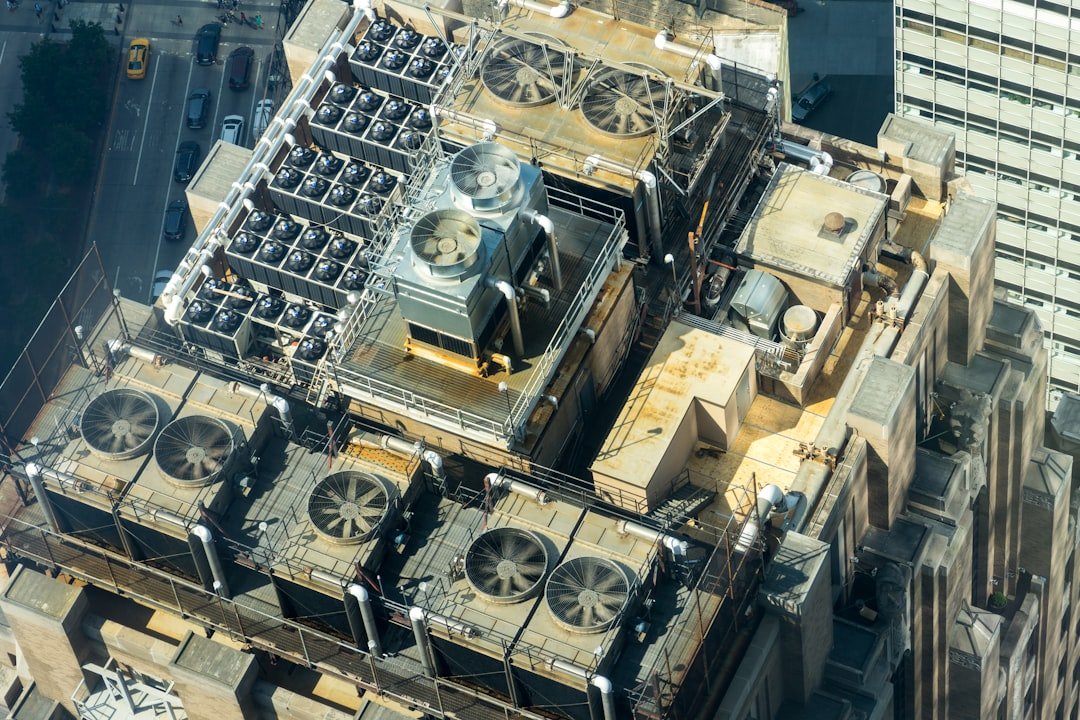Overheating is a common issue that many MacBook users encounter, often leading to performance degradation and potential hardware damage. The sleek design of MacBooks, while aesthetically pleasing, can sometimes hinder effective heat dissipation. As these devices are equipped with powerful processors and high-resolution displays, they generate significant heat during intensive tasks such as video editing, gaming, or running multiple applications simultaneously.
When the internal temperature rises beyond the optimal range, the MacBook may throttle its performance to prevent damage, resulting in slower operation and a frustrating user experience. Understanding the implications of overheating is crucial for maintaining the longevity and efficiency of your MacBook. Not only can excessive heat lead to reduced performance, but it can also affect the lifespan of internal components like the battery and logic board.
Users may notice symptoms such as fan noise increasing, unexpected shutdowns, or even system crashes. Therefore, recognizing the signs of overheating and taking proactive measures to mitigate it is essential for any MacBook owner who wishes to ensure their device operates smoothly and efficiently.
Key Takeaways
- MacBook overheating can lead to performance issues and potential damage to internal components
- Common causes of MacBook overheating include dust buildup, heavy usage, and poor ventilation
- Tips for improving MacBook ventilation include using a laptop stand and avoiding use on soft surfaces
- Cleaning the MacBook’s internal components can help remove dust and improve airflow
- Adjusting the MacBook’s power settings can help reduce heat generation and improve battery life
Common causes of MacBook overheating
Resource-Intensive Applications
One of the primary culprits is resource-intensive applications. Programs that require substantial processing power, such as video editing software or 3D rendering tools, can push the CPU and GPU to their limits, generating excess heat.
Multitasking and Dust Accumulation
Additionally, running multiple applications simultaneously can exacerbate this issue, as each program demands resources that contribute to overall heat production. Another significant factor is dust accumulation within the device. Over time, dust and debris can build up in the vents and internal components, obstructing airflow and trapping heat inside the chassis.
Inadequate Ventilation
Furthermore, inadequate ventilation can also stem from using the MacBook on soft surfaces like beds or couches, which can block air vents and prevent proper cooling. Understanding these common causes allows users to take preventive measures to keep their devices running at optimal temperatures.
Tips for improving MacBook ventilation

Improving ventilation is a critical step in preventing overheating in MacBooks. One of the simplest yet most effective methods is to ensure that the device is used on a hard, flat surface. This allows for unobstructed airflow around the vents, facilitating better heat dissipation.
Using a desk or table instead of a bed or lap can significantly enhance cooling efficiency. Additionally, users should avoid placing objects near the air intake and exhaust vents, as this can restrict airflow and lead to increased temperatures. Another practical approach is to regularly check and clean the vents.
Dust can accumulate quickly, especially in environments with poor air quality. Using compressed air to blow out dust from the vents can help maintain optimal airflow. It’s advisable to perform this cleaning task every few months or more frequently if you notice signs of overheating.
Furthermore, keeping the surrounding area clean and free from clutter can also contribute to better ventilation, ensuring that your MacBook has ample space to breathe.
Cleaning the MacBook’s internal components
| Component | Cleaning Frequency | Recommended Method |
|---|---|---|
| Keyboard | Weekly | Use compressed air and a soft brush to remove dust and debris |
| Trackpad | Weekly | Use a microfiber cloth slightly dampened with water |
| Fans | Every 3-6 months | Use compressed air to blow out dust and dirt |
| Screen | Weekly | Use a microfiber cloth and screen cleaner solution |
While external cleaning is essential for maintaining airflow, internal cleaning is equally important for preventing overheating. Over time, dust and debris can settle on internal components such as fans and heat sinks, impeding their ability to dissipate heat effectively. To clean these components, users should consider opening their MacBook carefully.
This process requires specific tools and a certain level of technical skill; therefore, it’s crucial to follow manufacturer guidelines or seek professional assistance if unsure. When cleaning the internal components, it’s vital to focus on areas where dust tends to accumulate most, such as around the fans and heat sinks. Using a soft brush or compressed air can help dislodge stubborn dust particles without damaging sensitive components.
Additionally, checking for any signs of wear or damage during this process can be beneficial; for instance, if a fan is not spinning correctly or if thermal paste has dried out on the CPU, these issues should be addressed promptly to prevent overheating.
Adjusting the MacBook’s power settings
Adjusting power settings can significantly impact how your MacBook manages heat generation during use. macOS offers various energy-saving options that can help reduce CPU load and lower temperatures. For instance, users can access the Energy Saver preferences in System Preferences to optimize settings for better thermal management.
Enabling features like “Put hard disks to sleep when possible” or “Slightly dim the display while on battery power” can help reduce overall energy consumption and heat output. Moreover, users should consider monitoring their applications’ energy usage through Activity Monitor. This tool provides insights into which applications are consuming excessive resources and generating heat.
By identifying resource-hungry applications, users can make informed decisions about closing unnecessary programs or finding alternatives that are less demanding on system resources. Adjusting these settings not only helps in managing temperature but also extends battery life and enhances overall performance.
Using a laptop cooling pad

Incorporating a laptop cooling pad into your setup can be an effective way to combat overheating issues with your MacBook. These devices are designed to provide additional airflow around your laptop, helping to dissipate heat more efficiently. Cooling pads typically feature built-in fans that draw cool air from the environment and direct it toward the laptop’s base, which can significantly lower operating temperatures during intensive tasks.
When selecting a cooling pad, it’s essential to consider factors such as size compatibility with your MacBook model and fan noise levels. Some cooling pads come with adjustable fan speeds or customizable settings that allow users to tailor cooling performance based on their specific needs. Additionally, many cooling pads are designed with ergonomic features that elevate the laptop for better typing angles while enhancing airflow underneath.
This dual functionality makes them a worthwhile investment for anyone looking to improve their MacBook’s thermal management.
Monitoring the MacBook’s temperature
Regularly monitoring your MacBook’s temperature is crucial for identifying potential overheating issues before they escalate into serious problems. Various software tools are available that allow users to track CPU and GPU temperatures in real-time. Applications like iStat Menus or Macs Fan Control provide detailed insights into system temperatures and fan speeds, enabling users to make informed decisions about when to take action.
By keeping an eye on temperature readings during different tasks, users can identify patterns that may indicate overheating issues related to specific applications or usage scenarios. For example, if temperatures spike significantly while using a particular software program, it may be worth exploring alternative options or adjusting settings within that application to reduce resource consumption. Monitoring temperature not only helps in maintaining optimal performance but also serves as an early warning system for potential hardware failures due to excessive heat.
Seeking professional help for persistent overheating issues
If overheating persists despite implementing various preventive measures, seeking professional help may be necessary. Technicians with expertise in Apple products can conduct thorough diagnostics to identify underlying issues that may not be immediately apparent to users. Problems such as failing fans, degraded thermal paste on CPUs, or even hardware malfunctions could be contributing factors that require specialized attention.
Professional servicing often includes comprehensive cleaning of internal components and replacement of worn-out parts if necessary. For instance, if a fan is malfunctioning or if thermal paste has dried out over time, these issues can significantly impact cooling efficiency. By entrusting your device to professionals who understand the intricacies of MacBook design and functionality, you can ensure that any persistent overheating problems are addressed effectively and safely, ultimately prolonging the life of your device and enhancing its performance capabilities.
If you are experiencing overheating issues with your MacBook, it could be due to a variety of reasons such as dust buildup, heavy usage, or a malfunctioning fan. One article that may provide some insight into this issue is this article on troubleshooting common MacBook problems. It offers tips on how to identify and resolve overheating problems, as well as other issues that may be affecting your device’s performance. By following the advice in this article, you may be able to prevent your MacBook from overheating and potentially causing damage to its components.
FAQs
What are the common reasons for a MacBook overheating?
Some common reasons for a MacBook overheating include dust buildup in the vents, running too many applications at once, using the MacBook on a soft surface that blocks airflow, or a malfunctioning cooling system.
How can I prevent my MacBook from overheating?
To prevent your MacBook from overheating, you can regularly clean the vents and fans, avoid using it on soft surfaces, limit the number of applications running at once, and ensure that the cooling system is functioning properly.
What are the potential consequences of a MacBook overheating?
If a MacBook consistently overheats, it can lead to decreased performance, shortened lifespan of internal components, and potential damage to the battery.
Should I be concerned if my MacBook is overheating?
Yes, consistent overheating of a MacBook can lead to long-term damage and decreased performance. It is important to address the issue to prevent further damage to the device.
What steps can I take to cool down my overheating MacBook?
You can cool down an overheating MacBook by closing unnecessary applications, placing it on a hard, flat surface for better airflow, using a laptop cooling pad, and ensuring that the vents are clear of dust and debris.
